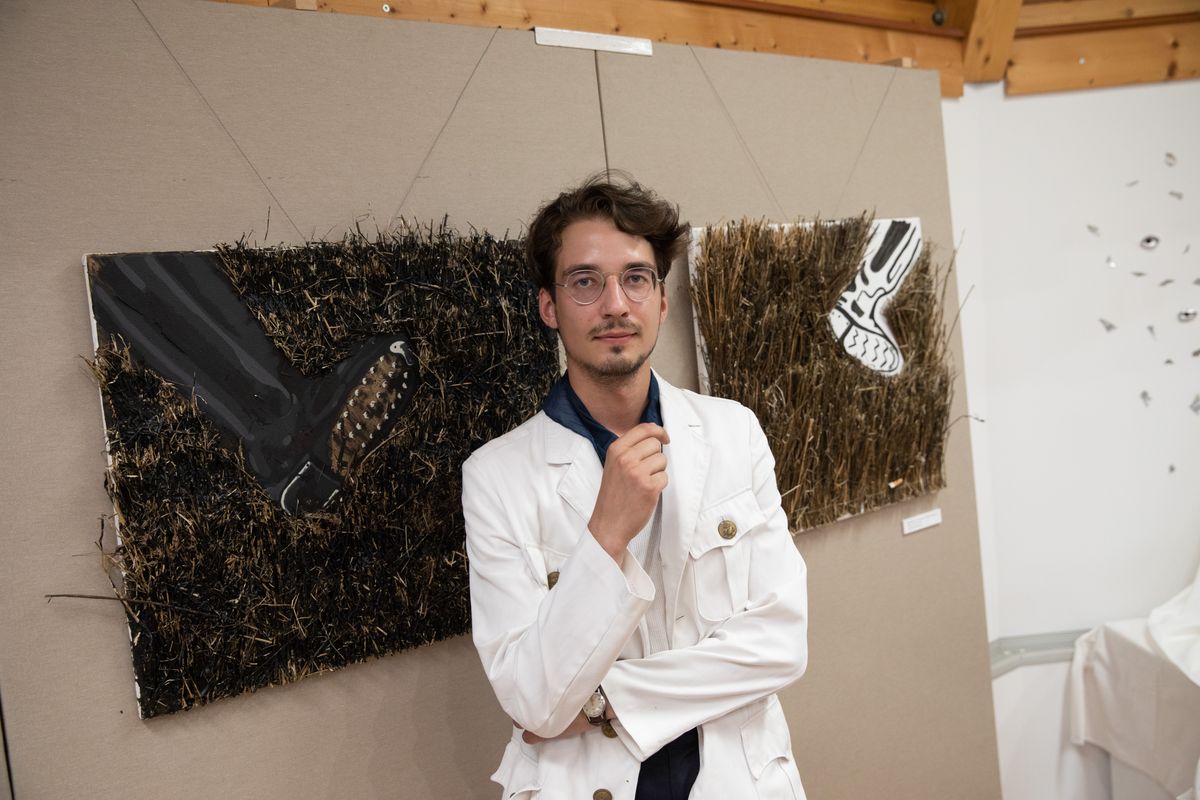This time, the GébArt Creative Colony, created in collaboration between the Hungarian Academy of Fine Arts and Keresztury VMK, gave newly graduated and future artists the opportunity to be inspired in an unusual environment. The 12-member team included students from Transylvania and Germany. Gleb Konken von Serbrowski, who arrived as an “exchange student” from the Dresden Academy of Fine Arts (Hochschule für Bildende Künste Dresden), thinks in his works about historical traumas interspersed with the desire for peace. Symbols of totalitarian regimes appear in many of his works, and as an artist he works to overcome the horrors of the past.

Historical traumas also appear in the works.
“I deal a lot with intergenerational trauma and how we can deal with it,” the young German answered our question. “In the pictures you can see now, I used straw and grass that I picked from the area. The straw field represents the patriotic feelings attached to the land. The pictures show German and Soviet military boots. I painted the grass behind the German boots black, as if it had been burned. The Soviet boots are stepping on grass littered with cigarette butts. Both refer to historical occupation, and I think a lot about the civilians who suffer under different regimes.”
Created in collaboration with the Hungarian Academy of Fine Arts and Keresztury Dezső VMK. Manufacturing plant Participants:
Zofia Bartos
Janusz Godwin Seklinski
Monica Gabor
Gleb Konkin von Serebrovski
Stefan Horvath
Elvira Zofia Jackley
Find a note
Sarah Julia Comoxin
Crystal treasure
Mezzo Zanette Virage
Sarah Rika Mori
Zoltan Toth
Folk art and fine arts go hand in hand.
Zsolt Keresi came from much closer, living in Sonkahigehe, the catering director at the Hungarian University of Fine Arts, drawing teacher student.
– The location inspired me greatly, and I tried to include nature in my work. The shells were placed on my small collection, and I tried to include the impressions I had here. I had been here several times as a student at Adi High School. Then and now we stayed in the workshop of the potter Tibor Tsute, where we played discus and sculpted. However, it is characteristic of our class that we do not only live in the present, but also have adventures in the past. The paintings and installations clearly show how we have returned to our ancient roots, i.e. folk art.






